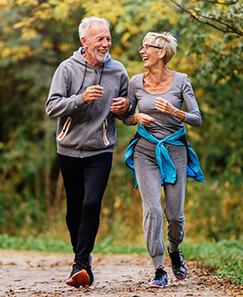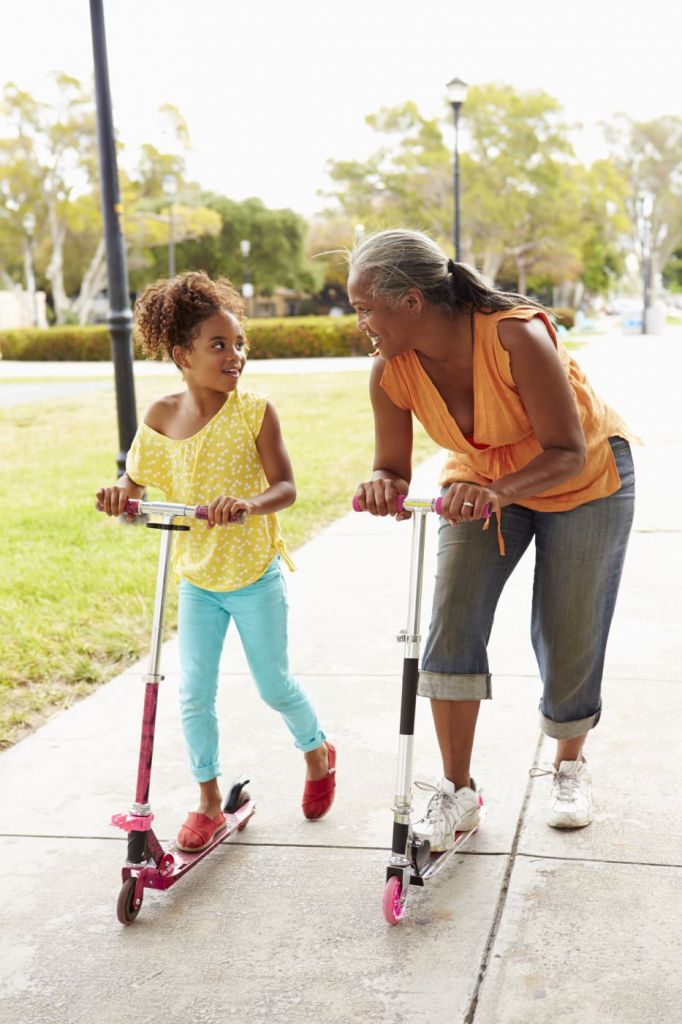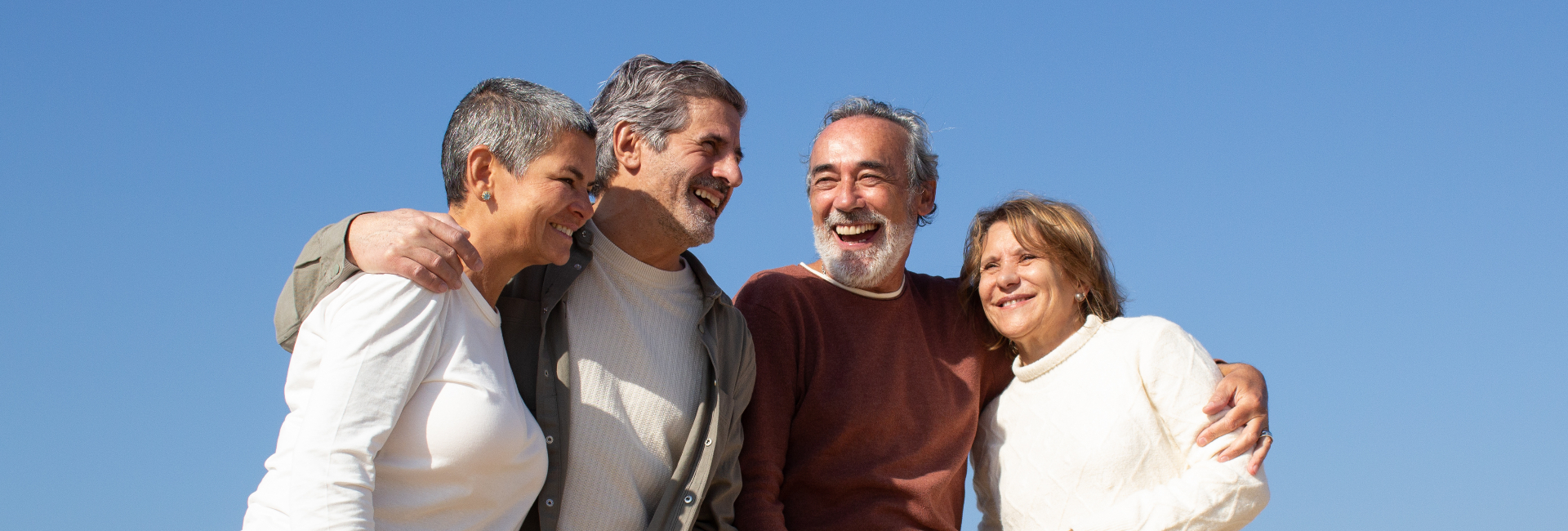Most people have heard of a loss of bone that occurs as we age, known as osteopenia, but another important impact of aging, related to our muscle mass, is just as crucial to understand and address. Let’s dive into what causes sarcopenia and what we can do to combat it.
What is sarcopenia?
Sarcopenia is a reduction of muscle mass and function that occurs with aging.1 This process can start as early as the 4th decade of life and continues to progress at quicker rates as we age starting at 1-2% per year.2,4 This means that by the time we reach the 7th or 8th decade of life it’s possible to have lost 40-60% of our total muscle mass!
Primary sarcopenia can simply be age-related while secondary sarcopenia is a result of a different systemic illness such as cancer, organ failure, end-stage renal disease, cardiomyopathy and other inflammatory conditions.1,2
Both types cause significant challenges and behave similarly. This change in the amount of muscle that one has does much more than just influence our appearance. It can also increase the risk for falls and fractures and can reduce your ability to perform daily tasks, therefore leading to greater loss of independence.
How common is sarcopenia?
Sarcopenia is quite a common finding in the U.S. Data suggests that up to 36.5% of individuals approximately 70 years of age have this condition.3 One of the reasons why we don’t hear as much about sarcopenia on a regular basis, is that it’s harder to measure than bone density (see Physical Therapy and Osteoporosis).
Do I have sarcopenia?
There are fewer distinct criteria to determine if someone is dealing with sarcopenia as compared to osteopenia/osteoporosis. However, the European Working Group on Sarcopenia in Older People (EWGSOP) has developed criteria to assist in identifying risk factors and aiding diagnosis.
Some of the factors that may influence the development of sarcopenia include:
- Living a sedentary lifestyle
- Changes in how well our bodies use protein
- Inadequate intake of energy or protein
- Changes in hormones (testosterone, thyroid, etc.)
Simply having these risk factors doesn’t guarantee that sarcopenia is present. However, there are some day-to-day signs that you should be aware of.
Signs that you may be dealing with sarcopenia can include:
- Falling
- Feeling weak
- Walking slower
- Difficulty getting up from a chair
Different methods have been developed to assist in identifying this loss of muscle. The SARC-F Tool is a brief questionnaire, addressing the signs listed above, that a healthcare provider may use to assess your risk for sarcopenia. A score of 4 or greater has been shown to lead to more likelihood of dealing with muscle loss.5
Along with this tool, sometimes Dual-energy X-ray Absorptiometry (DXA), Computed Tomography (CT), or Magnetic Resonance Imaging (MRI) can be used to further diagnose. However, these tools are far more expensive and often unnecessary.2
Fortunately, there are other, more functional, tests to help with the assessment of sarcopenia. These tests can easily be administered and interpreted by a physical therapist and include:
- 5 Time Sit-to-Stand Test or 30-Second Sit-to-Stand Test
- Grip Strength
- Gait Speed
- Timed-Up-and-Go Test (TUG)
- 400-Meter Walk Test
If you happen to score 2-2.5 standard deviations lower than normal values for your age, you are more likely to deal with sarcopenia.
Fighting back against muscle loss.
So, how do we avoid losing our muscle mass and function?? Whether your goal is to continue to be independent, participate in outdoor activities or get on the floor to play with your grandkids, fighting back against sarcopenia is important and doable.
EXERCISE
Resistance training exercise has been found to be the most effective form of activity to combat the loss of muscle as we age. Resistance training simply means using any type of resistance to activate muscles and build their size and strength.
Types of resistance can include:
- Your own bodyweight
- Bands
- Free weights (including dumbbells, barbells, and kettlebells)
- Household items (soup cans, bottles of water, ½ gallon of milk, etc.)
- Weight machines
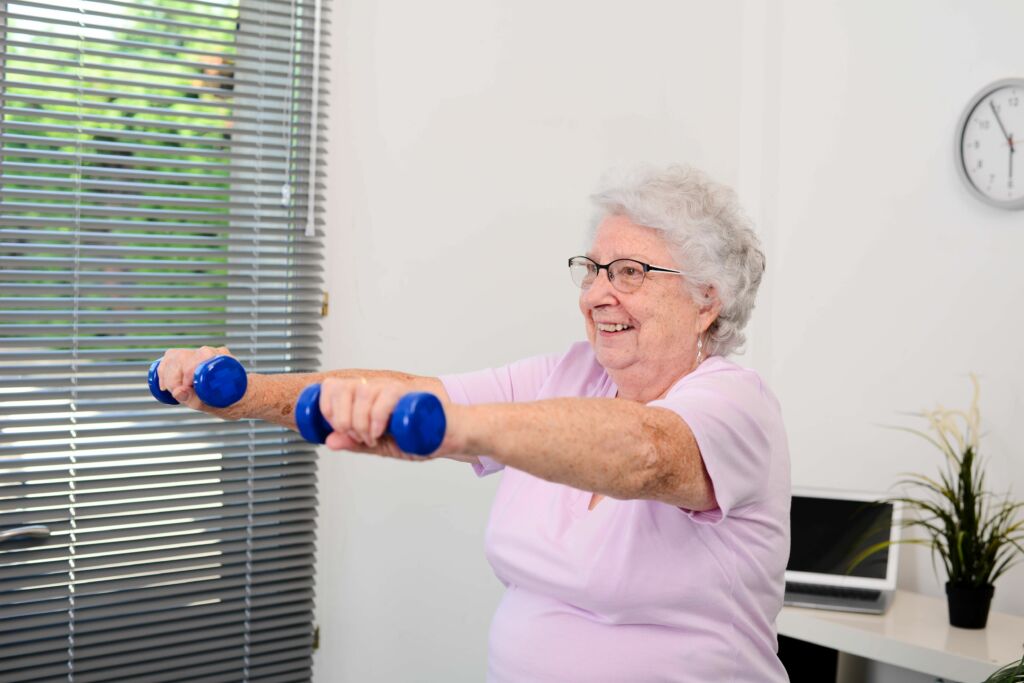
In multiple studies, individuals participated in 10-16 weeks of a resistance training protocol including all major muscle groups, three times per week, using a variety of different types of resistance training. In each of these studies, the individuals saw positive improvement in their muscle size and strength.7, 8 This illustrates the fact that time is also an important factor in this process, and therefore continuing to participate in resistance training, in some fashion, throughout the lifespan is critical to fighting sarcopenia.
Aerobic or endurance exercise can also have positive effects on an individual’s capacity to stave off muscle loss. In some cases, to even increase it.9 A plethora of aerobic activities can work to elicit this response including biking, swimming or engaging in any recreational sport. The options really are endless.
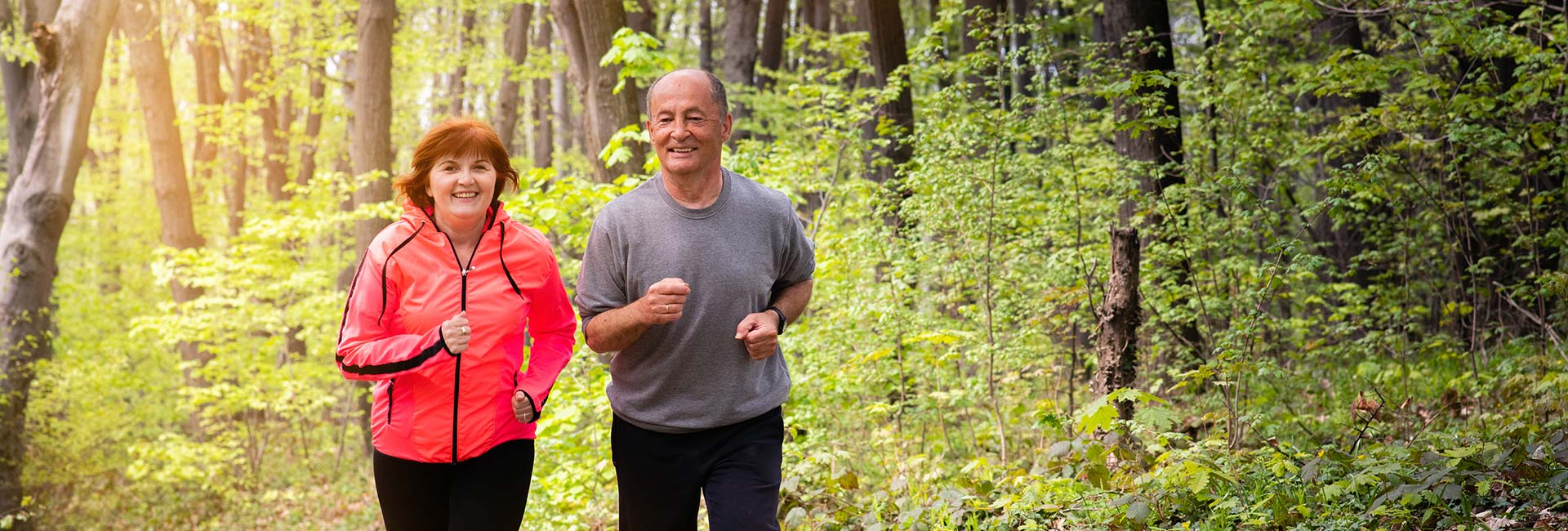
Below we can see an example MRI image of a man at age 24 with significantly more muscle than his inactive 66-year-old counterpart. However, we can see if that 66-year-old were to be active, he would have retained a much larger portion of his muscle and likely function much more independently.6
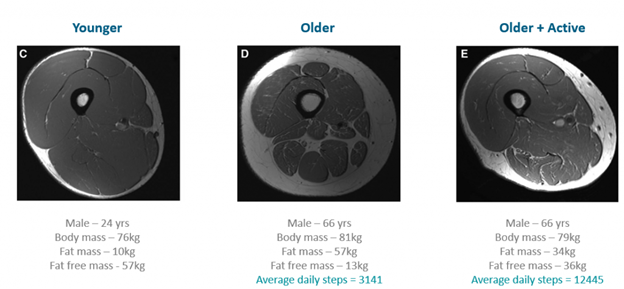
NUTRITION
While exercise has been found to be the most effective way to combat sarcopenia, some studies have shown promising effects of increasing daily protein intake to assist in that endeavor. While the current RDA for protein intake is .8g per kg of body weight, it is recommended that people over 65 years of age can benefit from 1.0-1.2 g per kg of body weight.10 However, prior to making any significant changes to your diet, we recommend that you discuss this with your healthcare provider.
Final thoughts about sarcopenia.
Sarcopenia is a common but modifiable result of aging. As mentioned previously, sarcopenia is not often diagnosed by many medical professionals, even if it is present. If you do happen to identify with any of the signs listed above, there are excellent resources that exist to help you combat loss of muscle and function.
A personalized exercise program, including resistance and aerobic exercise, can absolutely help improve your quality of life and reduce any negative effects of sarcopenia. Physical therapists are well equipped to create these types of programs as well as to help you improve your balance and the ability to perform other daily tasks while mitigating any risk of injury. Don’t hesitate to find a PT near you to learn how you can personally combat the effects of sarcopenia.
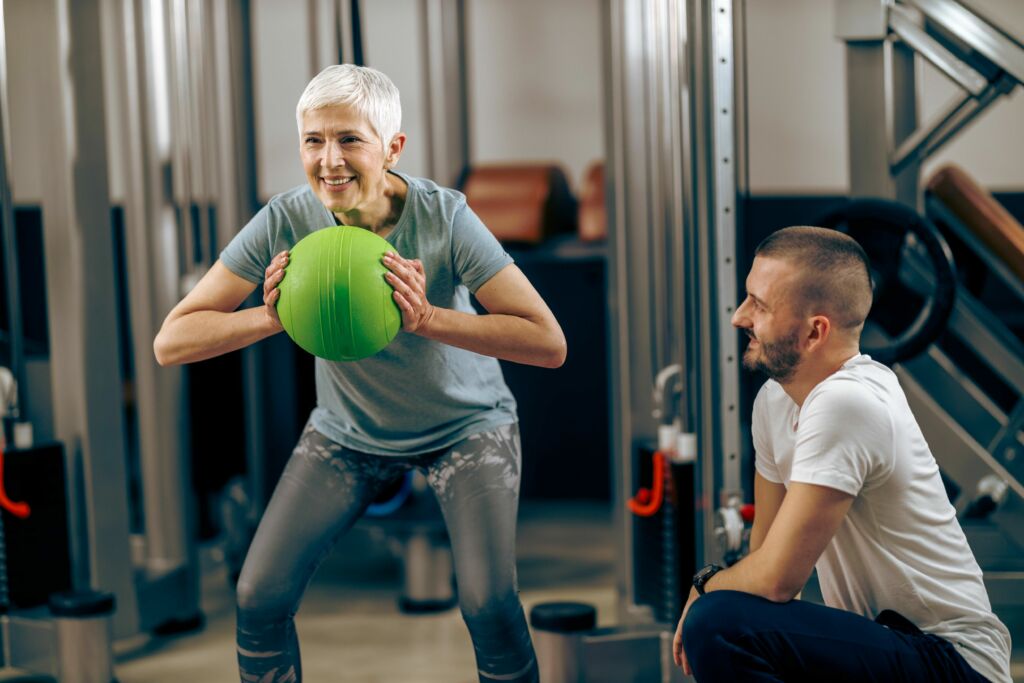
References:
- Dhillon RJ, Hasni S. Pathogenesis and Management of Sarcopenia. Clin Geriatr Med. 2017 Feb;33(1):17-26. doi: 10.1016/j.cger.2016.08.002. PMID: 27886695; PMCID: PMC5127276.
- Cruz-Jentoft AJ, Bahat G, Bauer J, Boirie Y, Bruyère O, Cederholm T, Cooper C, Landi F, Rolland Y, Sayer AA, Schneider SM, Sieber CC, Topinkova E, Vandewoude M, Visser M, Zamboni M; Writing Group for the European Working Group on Sarcopenia in Older People 2 (EWGSOP2), and the Extended Group for EWGSOP2. Sarcopenia: revised European consensus on definition and diagnosis. Age Ageing. 2019 Jan 1;48(1):16-31. doi: 10.1093/ageing/afy169. Erratum in: Age Ageing. 2019 Jul 1;48(4):601. PMID: 30312372; PMCID: PMC6322506.
- Brown JC, Harhay MO, Harhay MN. Sarcopenia and mortality among a population-based sample of community-dwelling older adults. J Cachexia Sarcopenia Muscle. 2016 Jun;7(3):290-8. doi: 10.1002/jcsm.12073. Epub 2015 Oct 15. PMID: 27239410; PMCID: PMC4864252.
- Metter EJ, Conwit R, Tobin J, Fozard JL. Age-associated loss of power and strength in the upper extremities in women and men. J Gerontol A Biol Sci Med Sci. 1997 Sep;52(5):B267-76. doi: 10.1093/gerona/52a.5.b267. PMID: 9310077.
- Malmstrom TK, Miller DK, Simonsick EM, Ferrucci L, Morley JE. SARC-F: a symptom score to predict persons with sarcopenia at risk for poor functional outcomes. J Cachexia Sarcopenia Muscle. 2016 Mar;7(1):28-36. doi: 10.1002/jcsm.12048. Epub 2015 Jul 7. PMID: 27066316; PMCID: PMC4799853.
- McLeod M, Breen L, Hamilton DL, Philp A. Live strong and prosper: the importance of skeletal muscle strength for healthy ageing. Biogerontology. 2016 Jun;17(3):497-510. doi: 10.1007/s10522-015-9631-7. Epub 2016 Jan 20. PMID: 26791164; PMCID: PMC4889643.
- Vikberg S, Sörlén N, Brandén L, Johansson J, Nordström A, Hult A, Nordström P. Effects of Resistance Training on Functional Strength and Muscle Mass in 70-Year-Old Individuals With Pre-sarcopenia: A Randomized Controlled Trial. J Am Med Dir Assoc. 2019 Jan;20(1):28-34. doi: 10.1016/j.jamda.2018.09.011. Epub 2018 Nov 7. PMID: 30414822.
- Seo MW, Jung SW, Kim SW, Lee JM, Jung HC, Song JK. Effects of 16 Weeks of Resistance Training on Muscle Quality and Muscle Growth Factors in Older Adult Women with Sarcopenia: A Randomized Controlled Trial. Int J Environ Res Public Health. 2021 Jun 23;18(13):6762. doi: 10.3390/ijerph18136762. PMID: 34201810; PMCID: PMC826793
- Yoo SZ, No MH, Heo JW, Park DH, Kang JH, Kim SH, Kwak HB. Role of exercise in age-related sarcopenia. J Exerc Rehabil. 2018 Aug 24;14(4):551-558. doi: 10.12965/jer.1836268.134. PMID: 30276173; PMCID: PMC616596
- Bauer J, Biolo G, Cederholm T, Cesari M, Cruz-Jentoft AJ, Morley JE, Phillips S, Sieber C, Stehle P, Teta D, Visvanathan R, Volpi E, Boirie Y. Evidence-based recommendations for optimal dietary protein intake in older people: a position paper from the PROT-AGE Study Group. J Am Med Dir Assoc. 2013 Aug;14(8):542-59. doi: 10.1016/j.jamda.2013.05.021. Epub 2013 Jul 16. PMID: 23867520.
Start your fight against sarcopenia today.
Our experts are committed to providing effective, efficient, and compassionate care to help you live a pain-free, active life. Our passion is to help every patient reach their goals on their journey to optimal performance.
